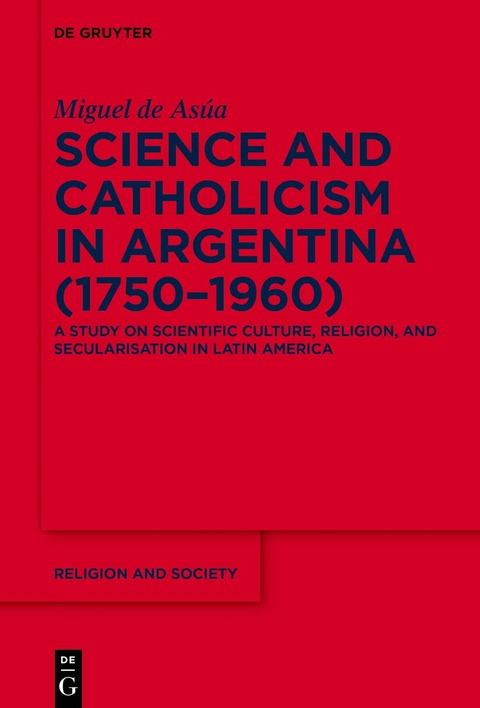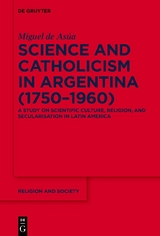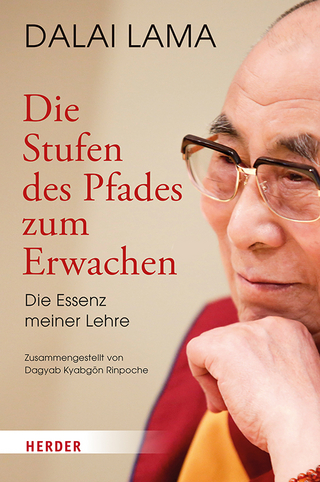Science and Catholicism in Argentina (1750–1960)
A Study on Scientific Culture, Religion, and Secularisation in Latin America
Seiten
2022
De Gruyter (Verlag)
978-3-11-048743-5 (ISBN)
De Gruyter (Verlag)
978-3-11-048743-5 (ISBN)
The series Religion and Society (RS) contributes to the exploration of religions as social systems– both in Western and non-Western societies; in particular, it examines religions in their differentiation from, and intersection with, other cultural systems, such as art, economy, law and politics. Due attention is given to paradigmatic case or comparative studies that exhibit a clear theoretical orientation with the empirical and historical data of religion and such aspects of religion as ritual, the religious imagination, constructions of tradition, iconography, or media. In addition, the formation of religious communities, their construction of identity, and their relation to society and the wider public are key issues of this series.
Science and Catholicism in Argentina (1750–1960) is the first comprehensive study on the relationship between science and religion in a Spanish-speaking country with a Catholic majority and a "Latin" pattern of secularisation. The text takes the reader from Jesuit missionary science in colonial times, through the conflict-ridden 19th century, to the Catholic revival of the 1930s in Argentina. The diverse interactions between science and religion revealed in this analysis can be organised in terms of their dynamic of secularisation. The indissoluble identification of science and the secular, which operated at rhetorical and institutional levels among the liberal elite and the socialists in the 19th century, lost part of its force with the emergence of Catholic scientists in the course of the 20th century. In agreement with current views that deny science the role as the driving force of secularisation, this historical study concludes that it was the process of secularisation that shaped the interplay between religion and science, not the other way around.
Science and Catholicism in Argentina (1750–1960) is the first comprehensive study on the relationship between science and religion in a Spanish-speaking country with a Catholic majority and a "Latin" pattern of secularisation. The text takes the reader from Jesuit missionary science in colonial times, through the conflict-ridden 19th century, to the Catholic revival of the 1930s in Argentina. The diverse interactions between science and religion revealed in this analysis can be organised in terms of their dynamic of secularisation. The indissoluble identification of science and the secular, which operated at rhetorical and institutional levels among the liberal elite and the socialists in the 19th century, lost part of its force with the emergence of Catholic scientists in the course of the 20th century. In agreement with current views that deny science the role as the driving force of secularisation, this historical study concludes that it was the process of secularisation that shaped the interplay between religion and science, not the other way around.
Miguel de Asúa, Academia Nacional de la Historia, Buenos Aires, Argentinien.
| Erscheinungsdatum | 21.04.2022 |
|---|---|
| Reihe/Serie | Religion and Society ; 89 |
| Verlagsort | Berlin/Boston |
| Sprache | englisch |
| Maße | 155 x 230 mm |
| Gewicht | 674 g |
| Themenwelt | Geisteswissenschaften ► Religion / Theologie |
| Schlagworte | Catholic Church • Katholizismus • Lateinamerika • Latin America • Säkularisierung • Science • Secularisation • Wissenschaft |
| ISBN-10 | 3-11-048743-8 / 3110487438 |
| ISBN-13 | 978-3-11-048743-5 / 9783110487435 |
| Zustand | Neuware |
| Haben Sie eine Frage zum Produkt? |
Mehr entdecken
aus dem Bereich
aus dem Bereich
die Essenz meiner Lehre
Buch | Hardcover (2023)
Verlag Herder
CHF 51,90
eine Philosophie der besten Jahre
Buch | Hardcover (2024)
Carl Hanser (Verlag)
CHF 34,95




